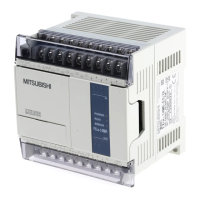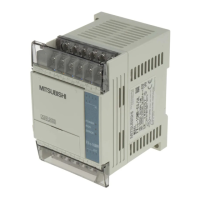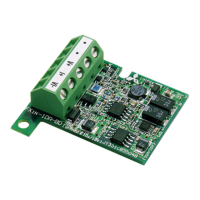FX Series Programmable Controllers Points of Technique 10
Chapter Contents
10.Points Of Technique...........................................................................10-1
10.1 Advanced Programming Points .........................................................................10-1
10.2 Users of DC Powered FX Units .........................................................................10-1
10.3 Using The Forced RUN/STOP Flags.................................................................10-2
10.3.1 A RUN/STOP push button configuration .................................................................10-2
10.3.2 Remote RUN/STOP control ....................................................................................10-3
10.4 Constant Scan Mode .........................................................................................10-4
10.5 Alternating ON/OFF States................................................................................10-4
10.6 Using Battery Backed Devices For Maximum Advantage .................................10-5
10.7 Indexing Through Multiple Display Data Values................................................10-5
10.8 Reading And Manipulating Thumbwheel Data ..................................................10-6
10.9 Measuring a High Speed Pulse Input................................................................10-6
10.9.1 A 1 msec timer pulse measurement........................................................................10-6
10.9.2 A 0.1 msec timer pulse measurement.....................................................................10-7
10.10 Using The Execution Complete Flag, M8029 ..................................................10-7
10.11 Creating a User Defined MTR Instruction........................................................10-8
10.12 An Example System Application Using STL And IST Program Control...........10-8
10.13 Using The PWM Instruction For Motor Control ..............................................10-15
10.14 Communication Format..................................................................................10-18
10.14.1 Specification of the communication parameters..................................................10-18
10.14.2 Header and Terminator Characters.....................................................................10-19
10.14.3 Timing diagrams for communications..................................................................10-20
10.14.4 8 bit or 16 bit communications............................................................................. 10-23
10.15 PID programming techniques ........................................................................10-24
10.15.1 Keeping MV within a set range............................................................................10-24
10.15.2 Manual / Automatic change over ......................................................................... 10-24
10.15.3 Using the PID alarm signals ................................................................................ 10-25
10.15.4 Other tips for PID programming........................................................................... 10-25
10.16 Additional PID functions.................................................................................10-26
10.16.1 Output Value range control.................................................................................. 10-26
10.17 Pre-tuning operation ......................................................................................10-27
10.17.1 Variable control....................................................................................................10-27
10.18 Example Autotuning program ........................................................................10-28
10.19UsingtheFX
1N-5DM Display module.............................................................10-29
10.19.1 Outline of functions.............................................................................................. 10-29
10.19.2 Control devices for 5DM ......................................................................................10-30
10.19.3 Display screen protection function....................................................................... 10-30
10.19.4 Specified device monitor......................................................................................10-31
10.19.5 Specified device edit............................................................................................10-32
10.19.6 Automatic Backlight OFF.....................................................................................10-33
10.19.7 Error display enable / disable ..............................................................................10-33

